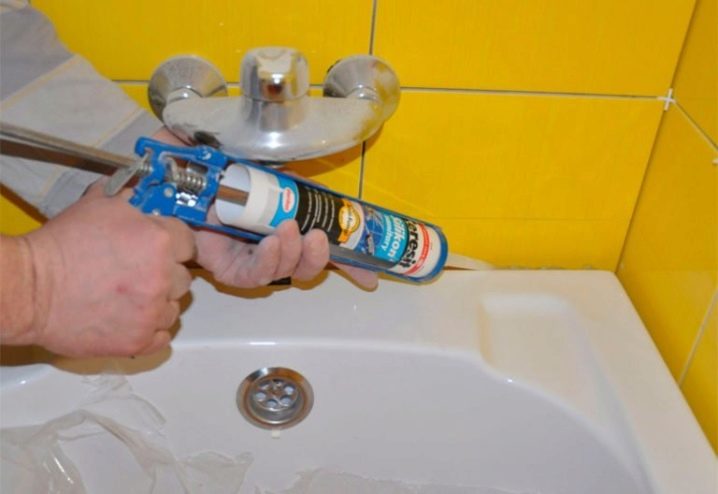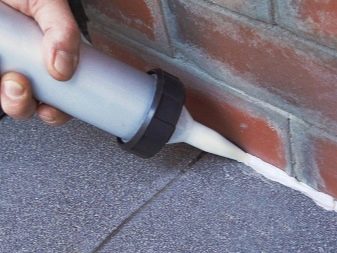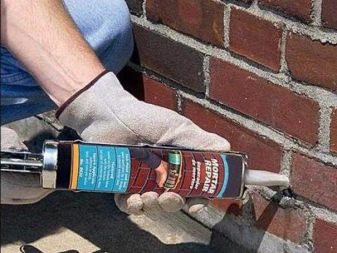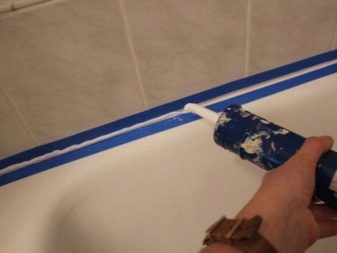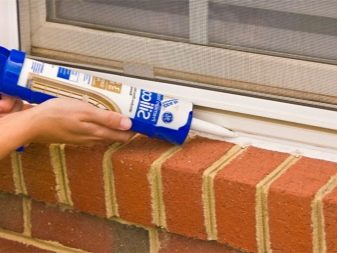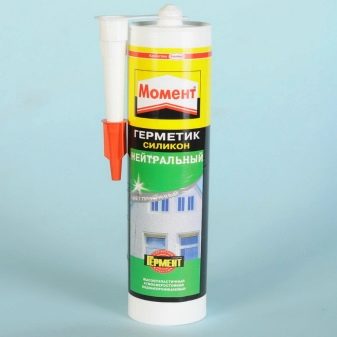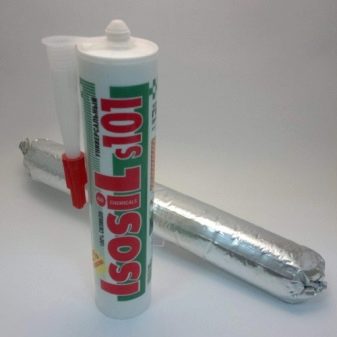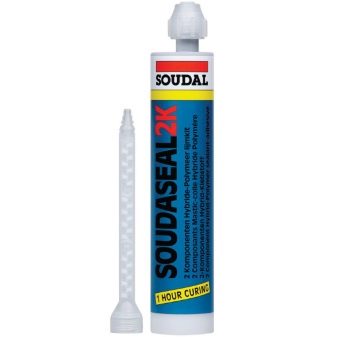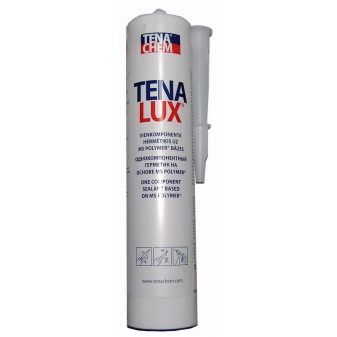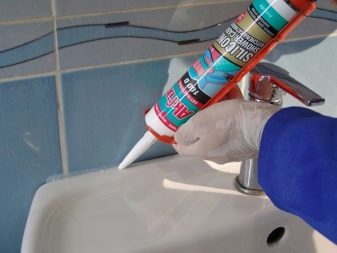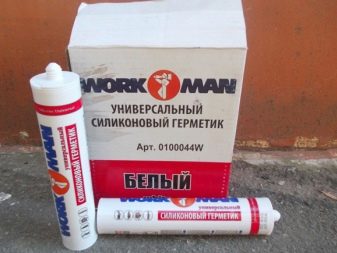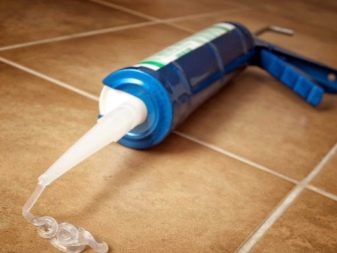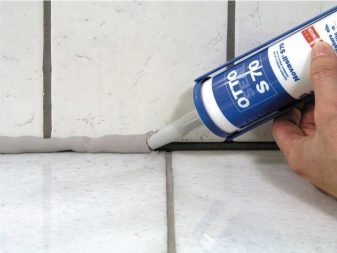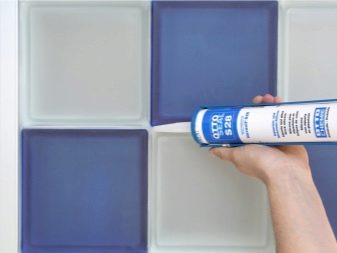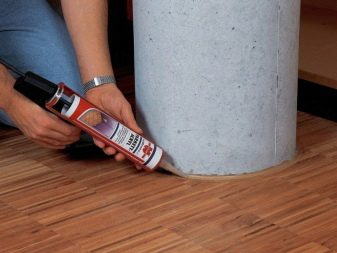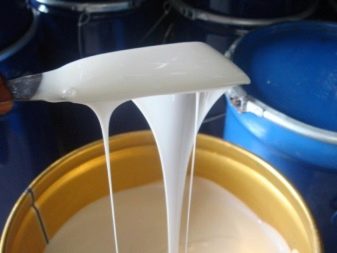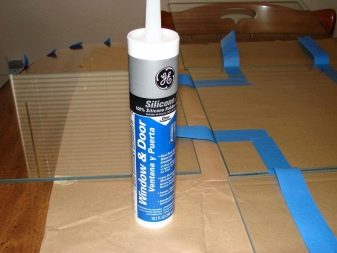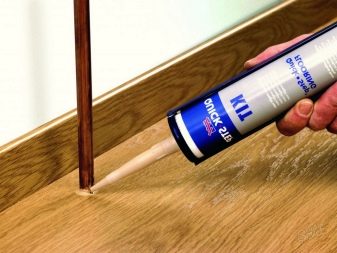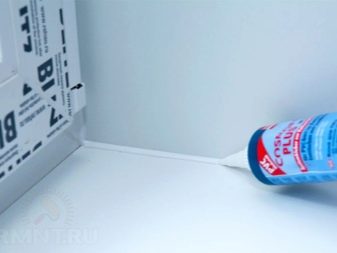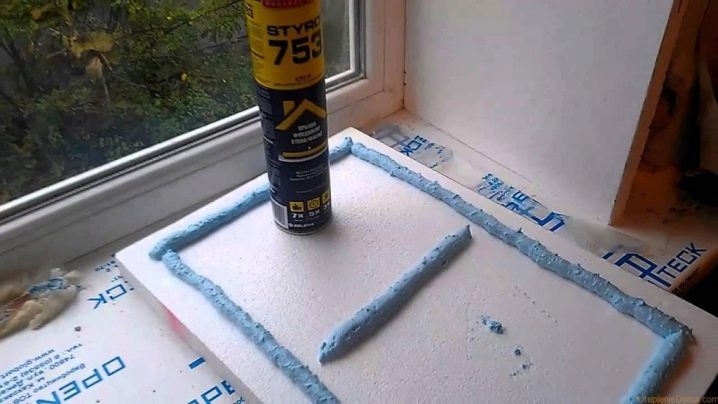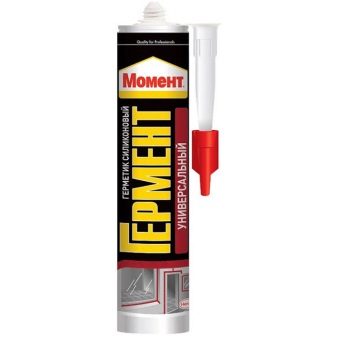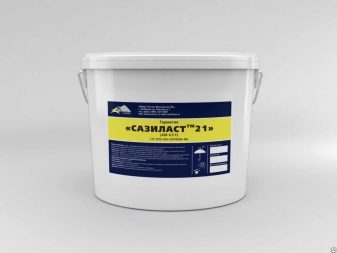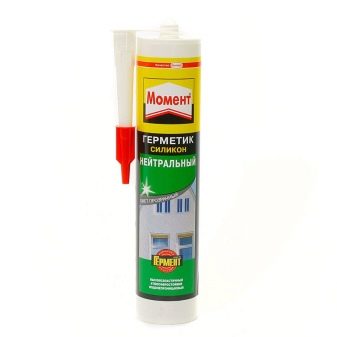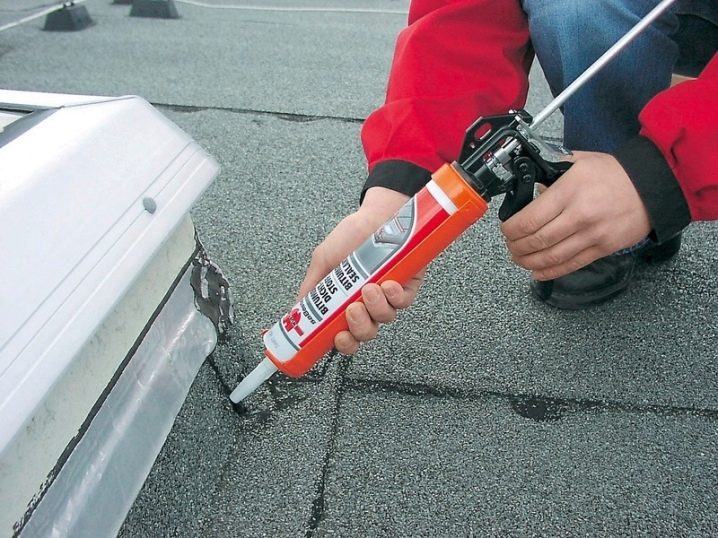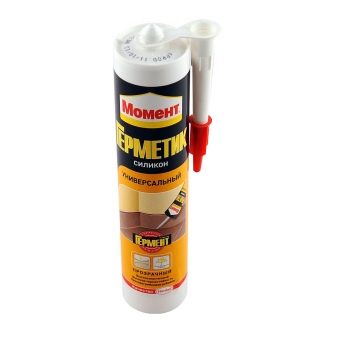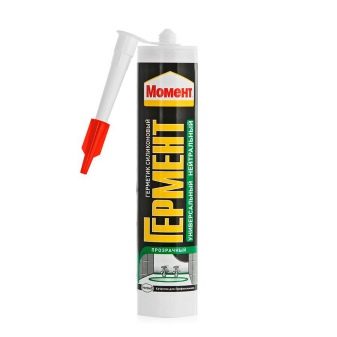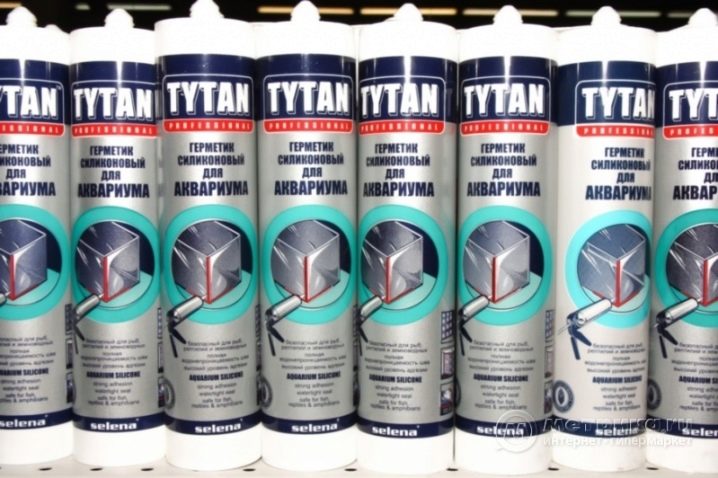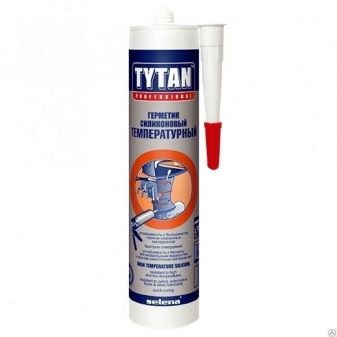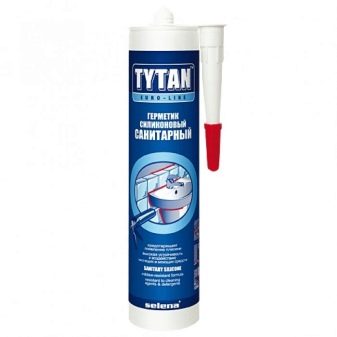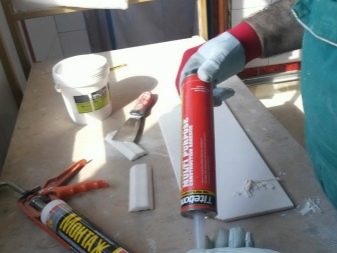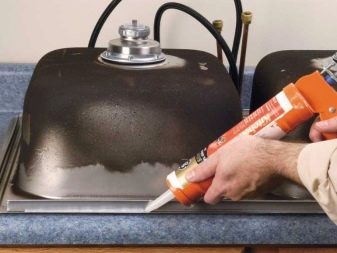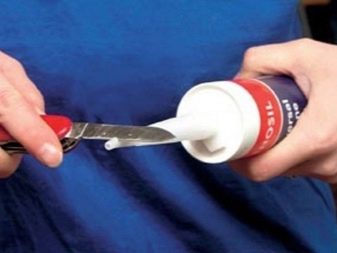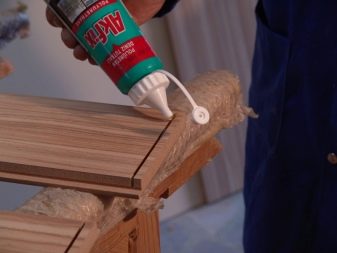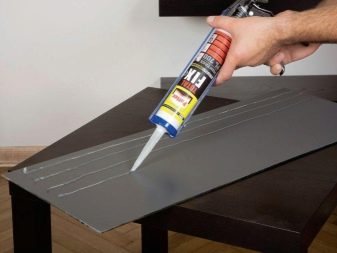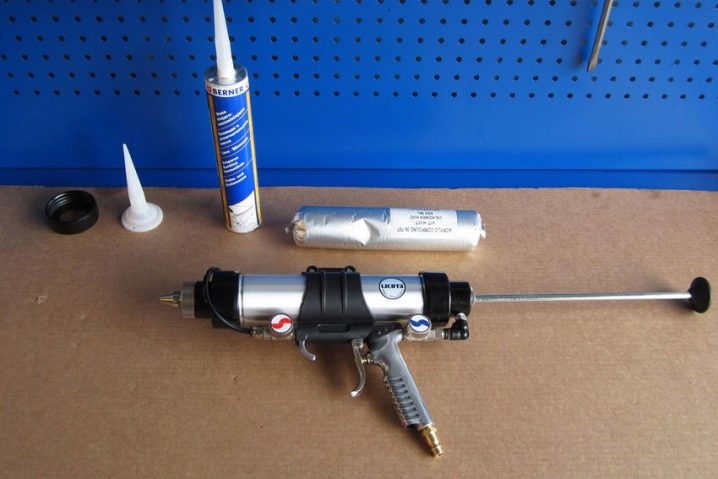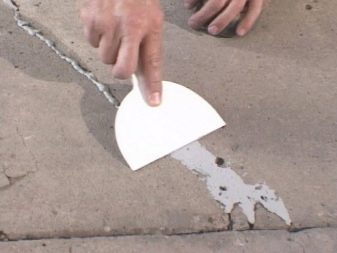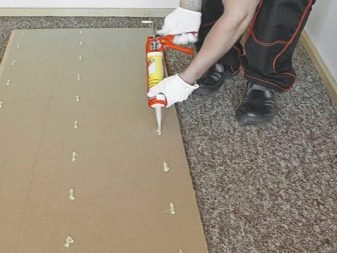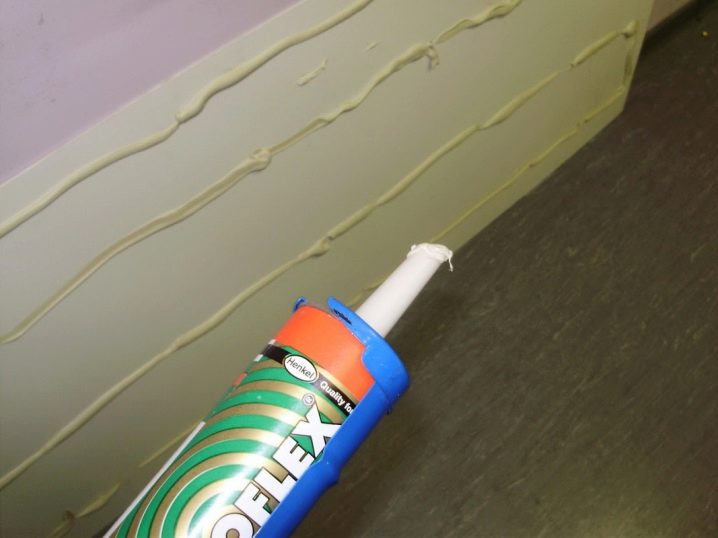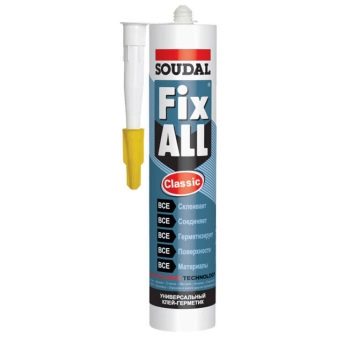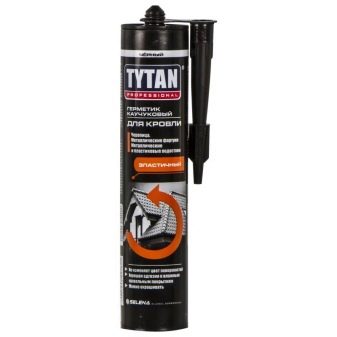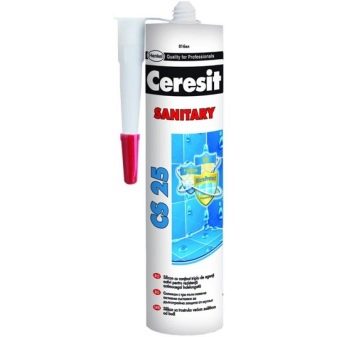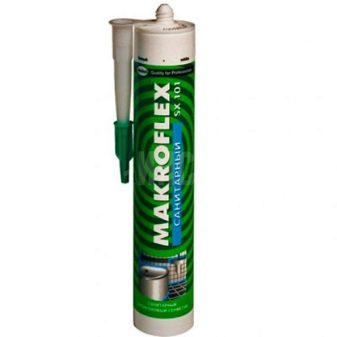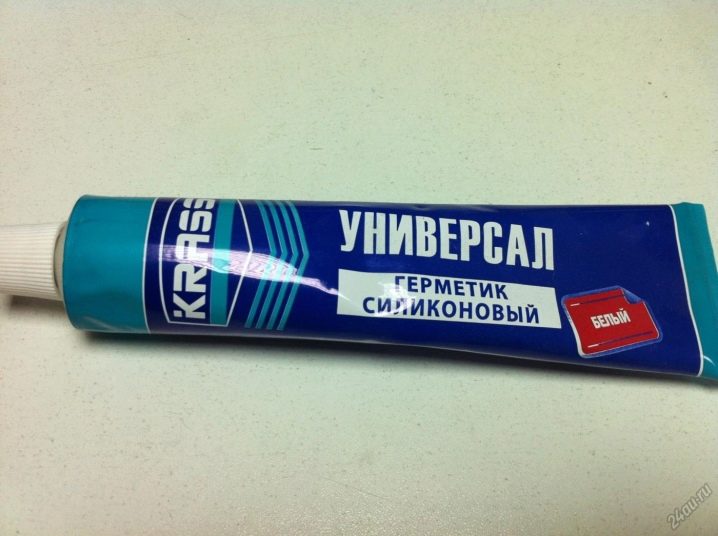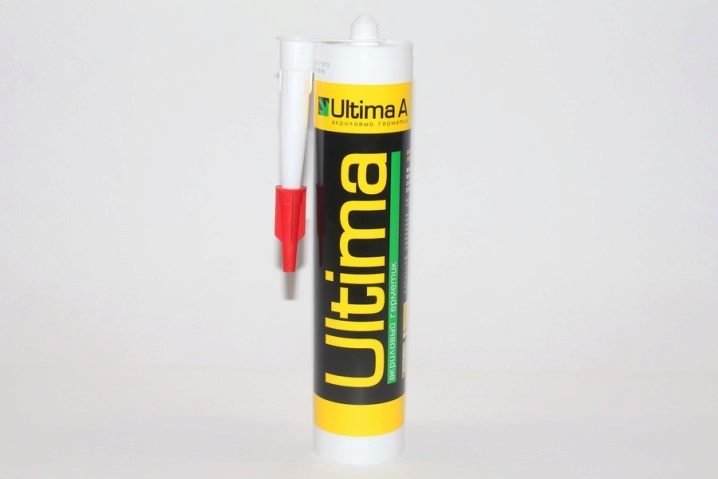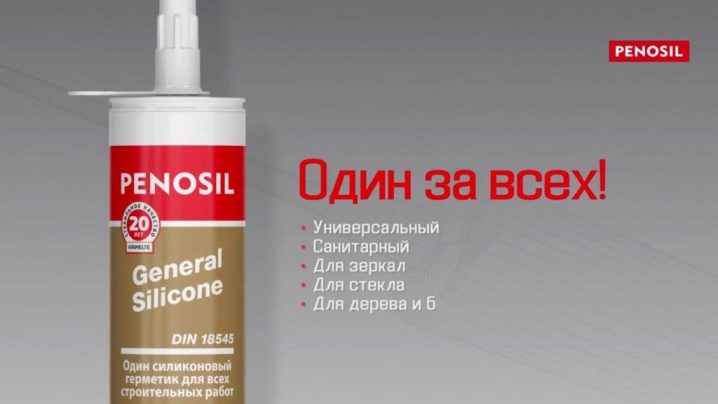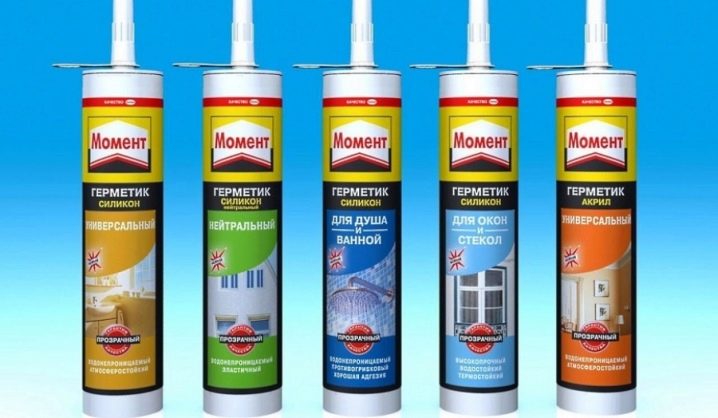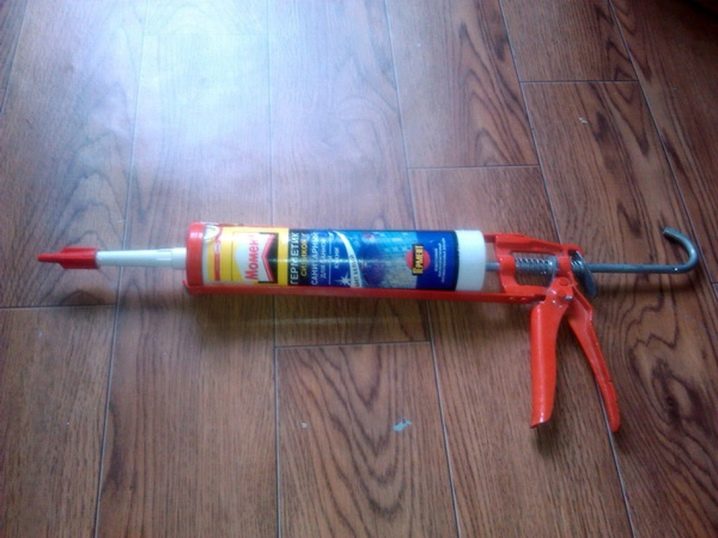Silicone Sealant: Pros and Cons
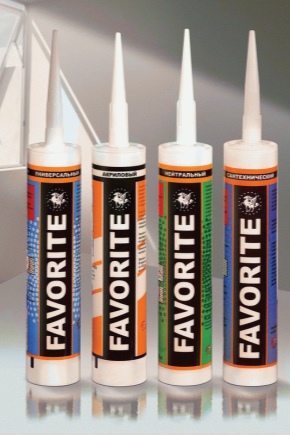
During repair work, quite often a situation arises when it is necessary to cover up the gaps between different surfaces, to achieve tightness or to seal holes. Very often such questions arise in the process of repairing the bathroom, toilet and kitchen, because in these rooms the percentage of humidity is highest. The most reliable and modern method of sealing any cracks and holes, even in wet conditions, is silicone sealant.
Special features
There was always a need to grout the joints, seal the holes and polish the joints, but earlier all kinds of putties were used for these works, which were not very convenient to work with, and the result did not always have a satisfactory quality.For these reasons, the search for a universal remedy was carried out until the present time and led to the appearance of silicone sealant. With this tool, moisture does not fall under a protected surface and does not allow it to collapse.
The scope of application of the sealant is very wide. With it, you can seal the window frame, cover up the cracks between the bathroom and tile, even use it to eliminate possible water leaks from plastic pipes. All this is possible thanks to the specific composition of the product. To make a silicone adhesive sealant, you need to use silicone rubber, which is the base element, reinforcements that will give strength to the finished material after application. In addition, a vulcanizer is needed, which makes the composition liquid and viscous, the adhesion primer for better contact with the working surface, a plasticizer for imparting additional elastic properties and a filler, which allows to obtain the desired volume and color of the sealant.
Sealants vary according to their vulcanizers.
- Acidic adhesives. A distinctive feature is the unconventional smell that gives acetic acid.It is better not to use such sealant on marble, aluminum and cement-containing surfaces. Working with him, it is important to use protective equipment and masks, because the fumes are very toxic and cause dizziness and allergies.
- Neutral sealant. There are several variants of such a solution: alcohol, amine and amide. In this case, a sharp smell is absent. Can be used on surfaces of various types.
Sealants are:
- single-component - they are used in the domestic sphere;
- two-component - characterized by the presence of complex components in the composition, they are most often used in production.
The characteristics of a silicone sealant make it possible to apply it on a wide variety of surfaces that may have a heterogeneous structure.
Their properties include:
- resistance to frost and moisture, easily withstand temperature changes;
- have increased agdezii, well connected with all sorts of details;
- ultraviolet rays are easily tolerated;
- high level of plasticity;
- high heat resistance, the application is possible in conditions from +300 degrees to -50.
This tool can be used both indoors and for outdoor work.
If you need to do something in the house, then the sealant can be applied to:
- sealing joints on walls, ceiling, floor, especially when working with plasterboard;
- sealing joints on countertops, window frames, using natural or artificial stone;
- sealing parts with high thermal stress;
- in the bath it can be used for mounting the mirror, sealing the pipes for sewage, eliminating joints during installation of the bath or shower stall.
Silicone sealant to use for exterior work:
- airtight sewage pipes;
- sealing joints on window frames and joints;
- carrying out repair work with tiles made of stone, which depart from its foundation;
- sealing joints in the process of laying the roof;
- in the process of vinyl cladding.
The production technology of the sealant is quite complicated and to ensure that it has the appearance of rubber, while having the ability to be liquid and easily penetrate various gaps, eliminating them, is not so simple, but it allows you to make repairs much better, and the result is much more representative.
There are a lot of variants of such products today, and it is not easy to choose the most high-quality and suitable look. You can buy a universal sealant "Econ" or buy a sanitary option "Moment", it all depends on the specific case and the task that is assigned to the tool.
Advantages and disadvantages
If we consider silicone sealant as a means, without which it is difficult to manage repairs of varying complexity, it is necessary to indicate all its advantages and disadvantages.
Consider the advantages of sealant.
- Obstacle to the occurrence of mold and the spread of insects on the surface. This is made possible by the fungicidal additives that are included in its composition.
- After complete drying, it is not afraid of the effects of detergents, even chemicals.
- With the help of a sealant, it will be possible to glue different types of surfaces. For the connection of ceramics, glass, plastic, wood, rubber with other materials silicone will be the most successful choice.
- The high strength of the material after drying, even with a liquid and elastic structure during application. This is achieved by the presence of silicon in the composition.
- The peculiar composition allows already glued surfaces to be mobile and elastic.
Despite such a large number of advantages, there are significant drawbacks to silicone sealant.
- There are a number of surfaces that are poorly connected with a sealant - this is polyvinyl chloride, fluoroplastic, polyethylene, polycarbonate and polypropylene.
- For application, the surface must be completely clean, because it is cleaned, degreased and completely dried. When applied to a wet surface, material properties are significantly degraded.
Acrylic and silicone sealants have some differences, and first of all, the difference is in their composition: for silicone glue, rubber is important in composition, but for acrylic it is acrylic acid. Silicone sealants are used to work with plastic, wood and ceramics, and the acrylic variety is universal. Working with the acrylic version, you can polish it to get a completely smooth surface that can be painted. However, there is a stronger shrinkage and in a frozen form the material is not as elastic.This type is used for internal work, because as with a large amplitude of the temperature regime it can deteriorate.
Silicone sealant provides better adhesion to smooth and smooth surfaces, it is not afraid of compression and kinks. Because of this, the cost of this option is more expensive than acrylic. Both materials can be both transparent and colored, which are used in different situations.
Since silicone sealants can be one- and two-component, it is important to understand the differences. and in this case, identifying certain advantages and disadvantages of each of the options. One-component composition is most common, it is used for all construction work, both professionals and amateurs. The simplicity of working with it determines the popularity of this material. The use of sealant is constantly expanding. So, it can be used not only to repair the house, it is also very useful for working with the machine, eliminating any seams, cracks and joints, it can be used to isolate electrical equipment, and in some cases it is used as a protective layer from moisture.
Two-component silicone is used in factories and in industry. The composition is much more complex, because it combines various elements. It is not used for everyday repair tasks.
Consumption
In order for the repair to be made with high quality and all the joints and joints are smeared up beautifully and reliably, it is important to know exactly how it should be applied and how much material to use. Calculating the most correct consumption of sealant on 1 m of the seam, you need to know its thickness and application technology. If we are talking about the corner seam between the bathroom and tiles, then the best will be the depth of 6 mm and 3 mm width. Using such calculations, you will need to use 20 ml of material per square meter. Often, in a standard package of 310 ml, and in order to apply it correctly and economically, it is best to be guided by the indicators given by the table:
Joint width in mm | |||||||
Stitch depth in mm | 5 | 7 | 10 | 12 | 15 | 20 | 25 |
5 | 12 | 8 | 6 | - | - | - | - |
7 | - | 6 | 4 | 3 | - | - | - |
10 | - | - | 3 | 2.5 | 2 | 1.5 | - |
12 | - | - | - | 2.1 | 1.7 | 1.2 | 1 |
15 | - | - | - | - | 1.3 | 1 | 0.8 |
In the event that a 600 ml package was selected for work, then the calculations will differ for 1 meter of seam:
Seam width | |||||||
Seam depth | 5 | 7 | 10 | 12 | 15 | 20 | 25 |
5 | 23 | 15 | 11 | - | - | - | - |
7 | - | 11 | 7 | 6 | - | - | - |
10 | - | - | 6 | 5 | 4 | 3 | - |
12 | - | - | - | 4 | 3 | 2.4 | 2 |
15 | - | - | - | - | 2.5 | 1.9 | 1.4 |
For a more economical use of the sealant, it is better to apply a semicircular joint, which is possible when working with a spatula having a 6 mm edge, in addition, it is very important to make the correct trimming of the nozzle of the tube itself, where the material will come from.To do this, you must attach the spatula to the nozzle at an angle of forty-five degrees and open the package.
Colors
The popularity of silicone sealant necessitated the expansion of its types and the emergence of a wide variety of variations in both composition and color.
Based on the external characteristics, there are several.
- Colorless. Most often used in the work with plumbing, if you want to remove the seams or connect elements. You can apply it when installing new furniture in the kitchen, treating unprotected surfaces, where moisture can get.
- Color silicone. It has a characteristic composition, due to which it is not painted later, therefore it is necessary to buy a product already with a certain pigment. Most often on the shelves you can find white, gray, beige, brown and other options.
In addition, depending on the scope of use there are a number of other options sealant.
- Bituminous. With it, you can cope with cracks in the basement and the foundation, to eradicate damage to tiles and slate. Can be used with a wide variety of surfaces. This is a moisture resistant option that is not afraid of temperature changes and has good adhesion.
- Universal. With it, you can eliminate drafts from the window, using glass in a wooden frame during installation. For external use, it is best to use a colorless sealant to eliminate its visibility on wood.
- Aquarium. It has no toxic elements in the composition. Flexible and elastic, with high agdezii, resistant to water and dries quickly. It is used to work with shower cabins, ceramics and glass products, for fastening aquarium details.
- Sanitary. Used in rooms where high humidity levels. A distinctive feature is the presence of antifungal and antibacterial components.
- Heat resistant. Used in industry. The main purpose is the assembly of pumps, motors, furnaces, sealing of heating pipes, during electrical installation works.
Since the scope of use of sealants is very large, it is important to choose the right option for a particular type of work. If the surface needs to be painted later, then it is important to choose either the appropriate type of silicone or purchase it in the desired color. From the correct selection of funds will depend entirely on the result of the work done.
How to apply?
In order to start working with silicone sealant, it is important to prepare and purchase everything you need. The first point will be protective clothing, which should completely cover the skin of the hands, and if possible it is better to wear a jumpsuit and a long-sleeved jacket to protect the whole body. There are compounds with a more aggressive composition, for them it is desirable to use a protective mask on the eyes and nasopharynx.
The second stage of preparation will be obtaining the necessary knowledge, with the help of which it will be possible to do all the necessary work quickly and correctly.
The sequence of works.
- Preparation of workwear and necessary materials.
- Work with a surface on which sealant will be applied. It is important that it is clean, dry and free of grease. If there are decorative items, it is better to hide them under masking tape to prevent silicone glue from getting onto the surface.
- To use a sealant, you will need a mounting gun that will simplify application. To properly install and work with it, simply read the instructions on the package.
- The tip of the spout on the container with a sealant should be cut by a scythe.This option allows the material to drain evenly and economically used in the work. If you cut off a smooth edge, then the shape of the flowing substance will be round, and with an oblique cut, ellipsoid, which will minimize the waste of excess material.
- Silicone is applied to the surface when the balloon is at a 45 degree angle. The application is thin strips so that the glue dries faster. After the application is complete, residues of unwanted material must be removed with a spatula.
The duration of drying depends on the type of glue that was chosen and the thickness of the layer that was applied to the surface. It usually completely freezes in a day, and the first signs of hardening can be seen already after twenty minutes. When applied to the surface of particleboard and fiberboard, it is better to use a spatula and squeeze a very small amount of the substance. If there is a goal to create a perfectly flat surface on these surfaces, then it is best to seal the sealant with gasoline or white spirit, the number of which should be small.
In order to more precisely understand what is to be done with the sealant, the first thing you should pay attention to is the instruction indicated on the package.Most often, manufacturers indicate all that the worker must know in the process of interacting with a silicone agent. If the quality of work is extremely important, then before buying a sealant you need to pay attention to the time of its manufacture, and if they are stitched, then it is better not to purchase the tool.
If the choice is made correctly, then work with silicone glue will be quite simple and comfortable. As soon as the necessary amount of funds has been applied to the surface, it is important to ensure that everything that is superfluous is promptly removed. This can be done easily with your own hands, but it is important to know the sequence of actions. For fresh solutions, it is best to use white spirit, but you need to make sure that it is safe for the surface itself. If so, then as soon as possible it is applied to the area that needs to be cleaned, and all the excess is quickly removed.
There is another very effective tool that allows you to wash the silicone off the surface, this is the “Penta 840”. The use of this option will allow you to simply dissolve the sealant, even if it is dry. The simplest, but no less effective, is the use of a soap solution.After wetting a cloth in it, it is necessary to apply it evenly on the surface to be washed off.
The most dangerous to cover will be the use of a knife or spatula, with which dried silicone is eliminated from the surface. It is necessary to use these tools very carefully and without undue haste. With the help of solvents, it will be possible to remove only fresh or thin areas of silicone, and for denser ones, you need to use a mechanical option.
Manufacturers
Any tools and materials for repair work may have a different price, which depends on their quality and the brand that they are issued. If it is possible to buy a more expensive option, then it is more likely that the result will be an order of magnitude better than using a cheap one.
To navigate among silicone sealants and help to choose the best option, you need to review the most well-known manufacturers who have long been on the market and have recommended their products as high-quality and durable.
Among the most popular emit Makroflex, Ceresit, Tytan, Soudal, Krass, Ultima, Penosil and Titan.
Makroflex - These are products from Finland, it is characterized by use in the most difficult and difficult conditions. The lineup includes sanitary, and neutral and universal sealants.
Sealants Tytan produced by a Polish company that presents high-quality professional goods at competitive prices. If it is necessary to work in rooms with high humidity, it is necessary to use Ceresit CS 25 sealant, where, among other things, there are a large number of fungicides that prevent the formation of mold and mildew.
If we talk about products Krass, it is produced in Switzerland, Finland and other countries where great attention is paid to a quality product. This product is presented on the market in four options: acrylic, heat-resistant, silicone and neutral sealant. This option is used to work with concrete and stone, as well as for metal surfaces. Good for work in the kitchen and in the bathroom. The products of this company are characterized by good adhesion, resistance to aggressive media, elasticity, frost resistance and thermal stability, used from -50 to temperatures above 1000 degrees, in addition, the sealant is resistant to ultraviolet radiation.
If we talk about acid sealant Ultimathen it is suitable for a wide range of construction work. Due to good adhesion it interacts well with glass, wood and ceramics. You can use both inside and outside the building. It is produced in a 280 ml tube in black, gray, transparent, brown, white and beige. From the main characteristics we can distinguish the elastic composition, moisture resistance, resistance to ultraviolet rays, cost-effective packaging, which does not require the purchase of a gun.
Penosil is a one-component substance that allows you to seal and seal the seams both indoors and outdoors. It has good adhesion to metal, glass, ceramic, wooden surfaces with lacquer or paint, plastic and not only. It has a dense structure that allows not to spread and not to crawl during application to the seam. Quickly grabs and covered with foil. It is resistant to atmospheric changes and ultraviolet radiation.
Each option is universal in its own way, the sealant allows to achieve the best results in all areas of application.High-quality and reliable companies allow you to be confident as a result at the stage of buying materials, and further work will depend on the skill of using silicone sealant.
Tips and tricks
In order to buy a good sealant, it is important to pay attention to some characteristics, such as:
- the percentage of silicone in the composition should be equal to 26;
- the percentage of rubber organic mastic can range from 4 to 6 percent;
- the percentage of triol, polyurethane and acrylic mastic should be within 4 percent;
- epoxy resin content should not exceed 2 percent;
- and cement mixes should be less than 0.3 percent.
If we are talking about the density of the sealant, then it should not be less than 0.8 g / cmotherwise the composition is of poor quality. If you need to use a sealant for the food zone where the food is located, then in no case should you use an antimicrobial and antifungal sealant, also applies to work with the aquarium or terrarium. If there is a need to seal up small gaps in the windows, then it is best to choose a sealant for external works, which can be easily applied without wiping the drips and not worrying about the quality of the material, if it is exposed to sunlight and moisture.
When the sealant is applied to the surface, it is important to level it, for this you can use both scrap materials and soap solution. If you wet your finger in it and hold on the silicone, you can get a flat and smooth surface. Acrylic sealant after hardening can be painted. Not all versions of silicone are subject to staining, so you should pay attention to this when buying.
For wood, it is recommended to use transparent silicone, which will not be visible after drying. To work with the floor choose dark color options that do not stand out during drying. In order to quickly dry the sealant, it is best to apply it in thin layers and not in large quantities. Erase excess can be a liquid means, and machining with a spatula and construction knife.
When buying silicone, it is important to look at the documentation that comes with the product, so you can get an idea of the brand, quality and production time.
In that case, if there is a need to obtain a special form for the imprint of a particular material, you can use silicone molds.For their manufacture will need to take silicone sealant and potato starch. With proper mixing, the composition will turn out, which hardens well and quickly and makes it possible to obtain the desired impression, which will help in some types of repair work.
On what silicone to choose a sealant, see the following video.
